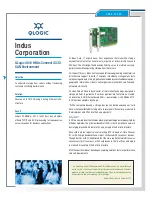
Replacing, moving, or adding hard drives 33
Online/activity
LED (green)
Fault/UID LED
(amber/blue)
Interpretation
Flashing regularly
(1 Hz)
Amber, flashing
regularly (1 Hz)
Do not remove the drive. Removing a drive may terminate the
current operation and cause data loss.
The drive is part of an array that is undergoing capacity
expansion or stripe migration, but a predictive failure alert has
been received for this drive. To minimize the risk of data loss, do
not replace the drive until the expansion or migration is
complete.
Flashing regularly
(1 Hz)
Off
Do not remove the drive. Removing a drive may terminate the
current operation and cause data loss.
The drive is rebuilding, erasing, or it is part of an array that is
undergoing capacity expansion or stripe migration.
Flashing irregularly Amber, flashing
regularly (1 Hz)
The drive is active, but a predictive failure alert has been
received for this drive. Replace the drive as soon as possible.
Flashing irregularly Off
The drive is active, and it is operating normally.
Off
Steadily amber
A critical fault condition has been identified for this drive, and
the controller has placed it offline. Replace the drive as soon as
possible.
Off Amber,
flashing
regularly (1 Hz)
A predictive failure alert has been received for this drive.
Replace the drive as soon as possible.
Off
Off
The drive is offline, a spare, or not configured as part of an
array.
Recognizing hard drive failure
A steadily glowing Fault LED indicates that that drive has failed. Other indications of hard drive failure
include:
•
The amber LED on the front of a storage system illuminates if failed drives are inside. This LED also
illuminates when other problems occur, such as when a fan fails, a redundant power supply fails, or
the system overheats.
•
A POST message lists failed drives when the system is restarted, as long as the controller detects at
least one functional drive.
•
ACU represents failed drives with a distinctive icon.
•
HP Systems Insight Manager can detect failed drives remotely across a network. For more
information about HP Systems Insight Manager, see the documentation on the Management CD.
•
The Event Notification Service posts an event to the Microsoft® Windows® system event log and the
HP Integrity System Event Log.
•
ADU lists all failed drives.
For additional information about diagnosing hard drive problems, see the troubleshooting chapter in the
server-specific service guide.
















































